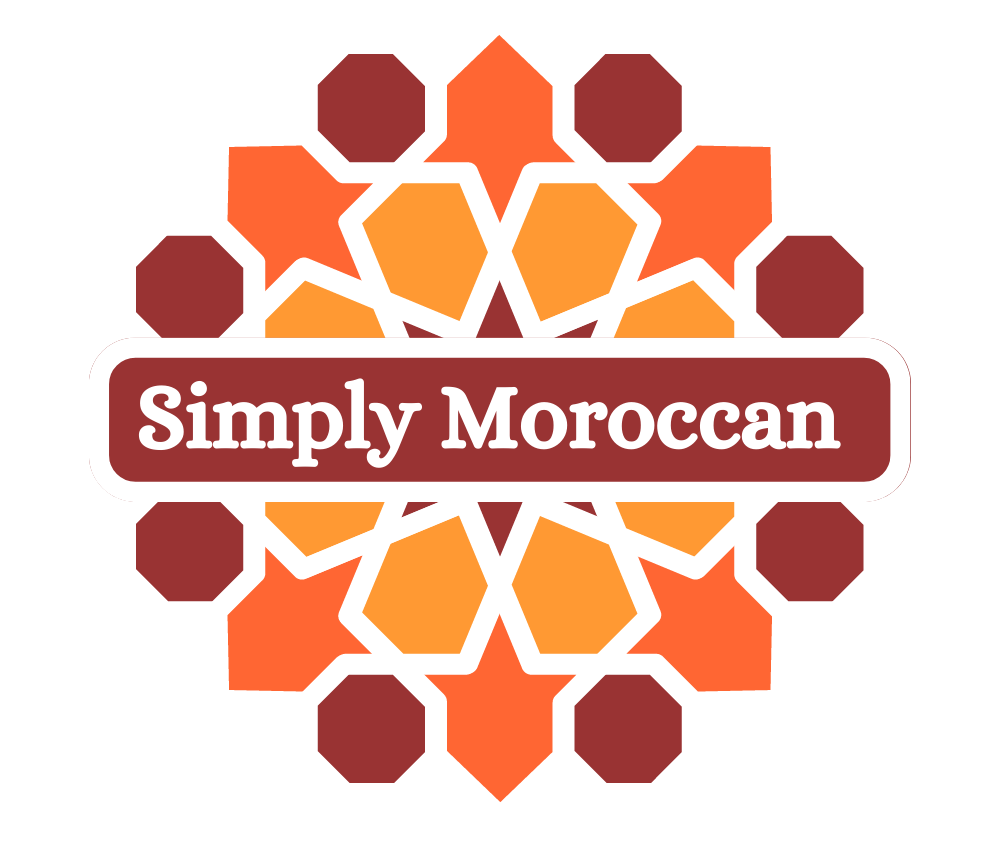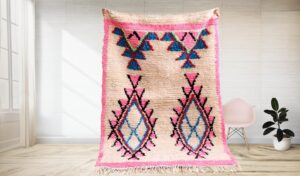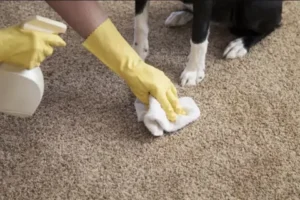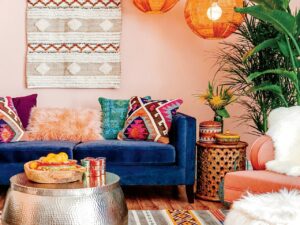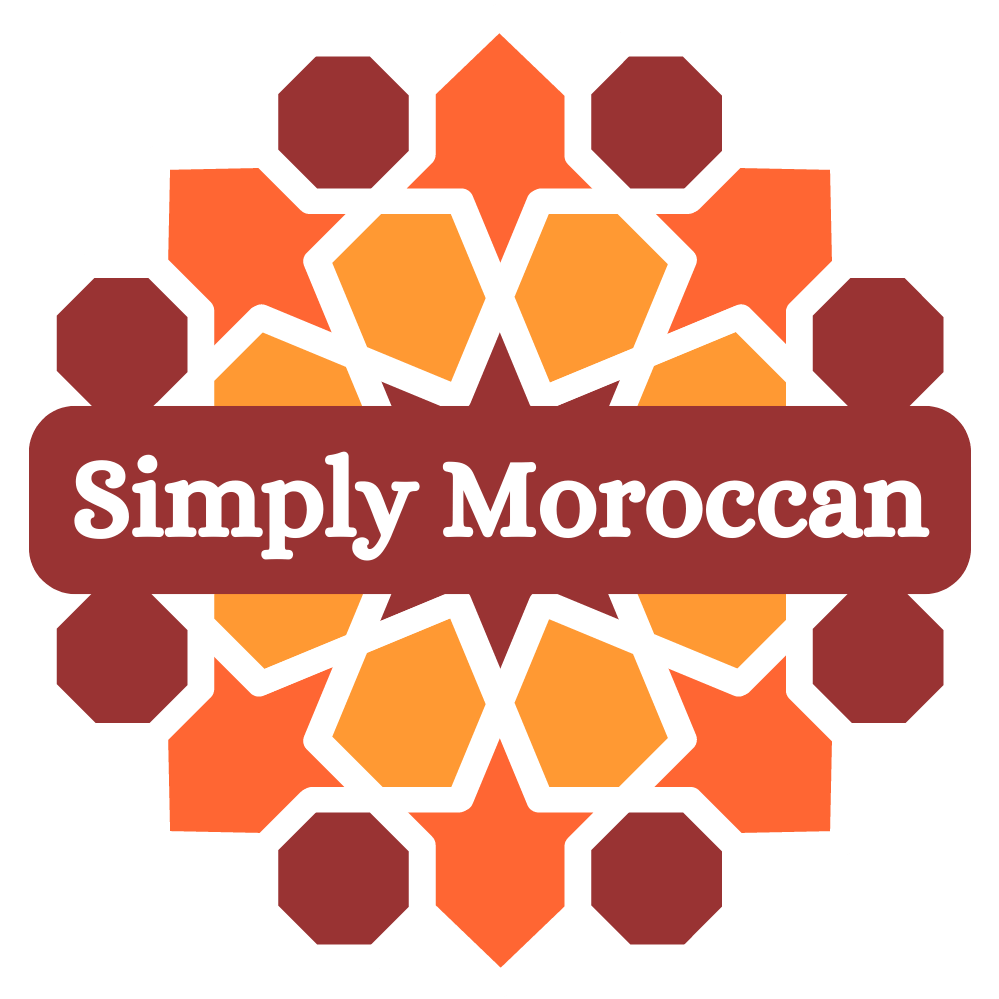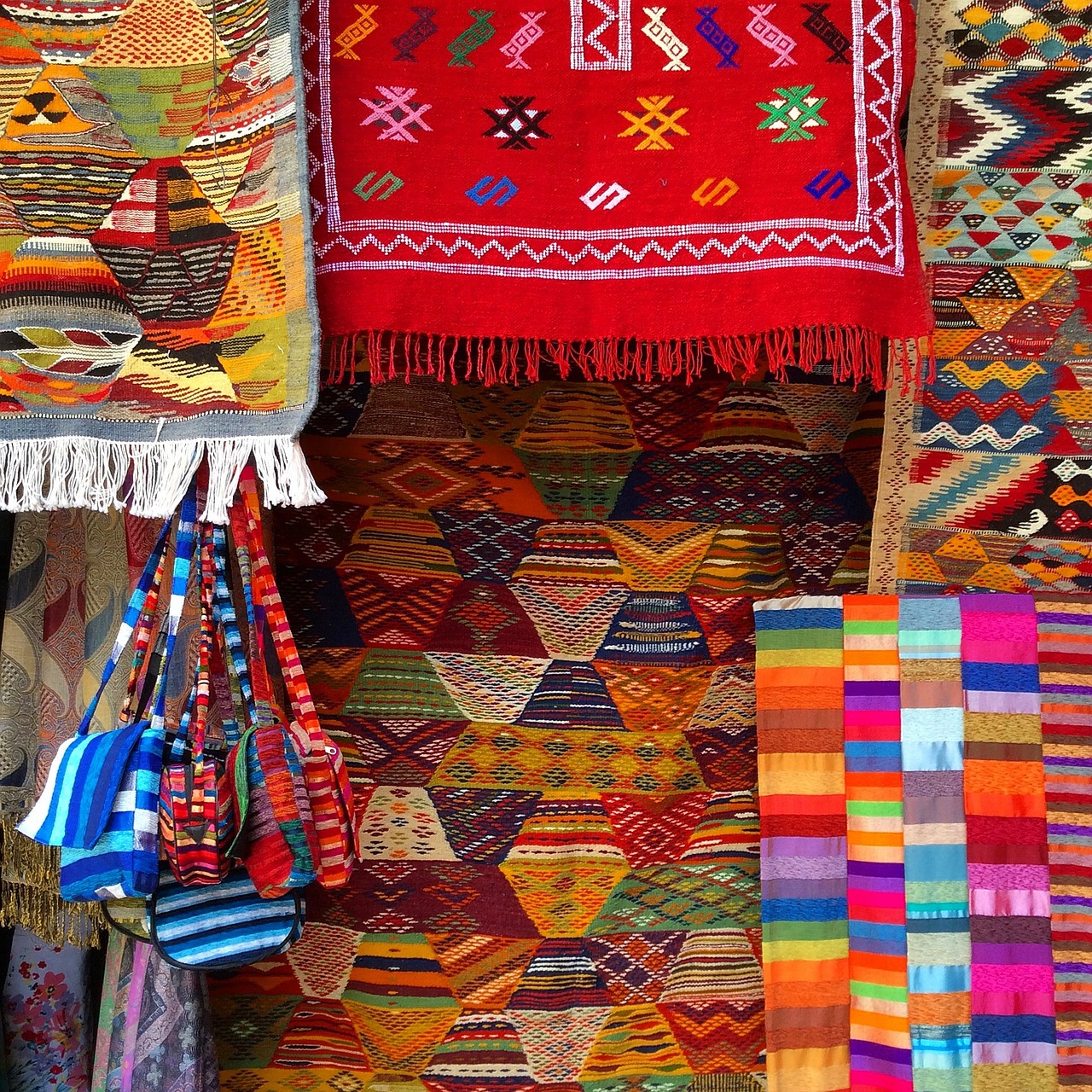
Step into a world of vibrant colors, intricate patterns, and rich cultural heritage as we dive into the captivating story of Moroccan rugs. These luxurious works of art have enchanted the discerning eye and mesmerized admirers for centuries. With their exquisite craftsmanship and unique designs, Moroccan rugs have become a symbol of elegance and sophistication.
Each rug tells a story, reflecting the skill and creativity of the artisans who carefully weave them by hand. From the bustling medinas of Marrakech to the serene villages of the Atlas Mountains, the artistry of Moroccan rug making has been passed down through generations. The distinct regional styles and techniques, such as the Beni Ourain and Boucherouite, add depth and variety to the tradition.
But these rugs are more than just beautiful objects. They are a reflection of Morocco’s rich history and diverse cultural influences. From the Berber tribes’ ancient traditions to the legacy of Arab and European encounters, every thread weaves together a narrative of cultural exchange.
Join us on a journey as we unravel the secrets of Moroccan rugs, exploring their origins, the symbolism behind their intricate motifs, and the enduring allure that continues to captivate collectors and interior designers alike. Get ready to be enchanted by the magic of Moroccan rugs.
The History and Origin of Moroccan Rugs
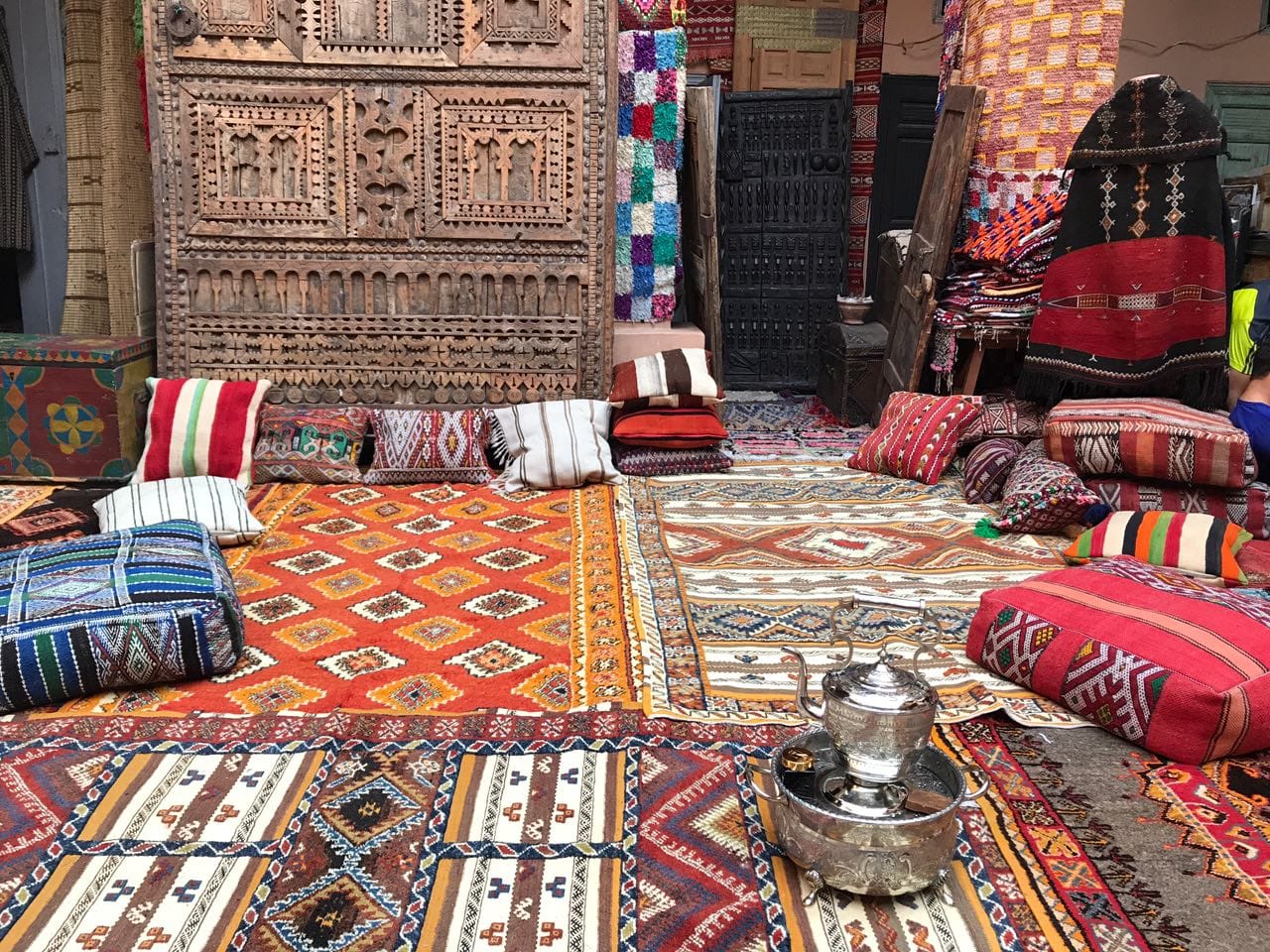
Moroccan rugs have a long and storied history that dates back centuries. The art of rug making in Morocco can be traced back to the Paleolithic era, with evidence of early weaving techniques found in archaeological sites. However, it was during the medieval period that the craft truly flourished.
The Berber tribes, who have inhabited the region for thousands of years, played a significant role in the development of Moroccan rug making. They were skilled weavers and used rugs not only for practical purposes but also as a means of artistic expression. The Berbers believed that rugs held spiritual significance and used them as protection against evil spirits.
Different Types and Styles of Moroccan Rugs
Moroccan rugs come in a wide variety of styles, each with its own unique characteristics. One of the most well-known styles is the Beni Ourain rug, which originated from the Beni Ourain tribe in the Atlas Mountains. These rugs are known for their distinctive geometric patterns and neutral color palette, typically featuring ivory or cream backgrounds with black or brown designs.
Another popular style is the Boucherouite rug, which is made from recycled textiles. These rugs are a celebration of color and creativity, showcasing vibrant hues and playful patterns. Boucherouite rugs are made by stitching together strips of fabric, creating a patchwork effect that is both visually stunning and environmentally friendly.
The Craftsmanship Behind Moroccan Rug Making
The art of Moroccan rug making is a labor-intensive process that requires skill, patience, and attention to detail. Artisans use traditional techniques that have been passed down through generations, often starting their training at a young age.
The first step in rug making is sourcing the materials. Moroccan rugs are typically made from natural fibers such as wool, which is known for its durability and softness. The wool is carefully sheared from sheep and then cleaned, carded, and spun into yarn.
Once the yarn is ready, the weaver begins the process of creating the rug. This involves setting up the loom, which is a frame used to hold the warp threads in place. The weaver then carefully interlaces the weft threads through the warp, creating the foundation of the rug.
Materials Used in Moroccan Rug Weaving
Moroccan rugs are known for their use of natural materials, with wool being the most common. Wool is prized for its durability, softness, and ability to hold dye. It is sourced from local sheep, which are well adapted to the harsh climate of the Atlas Mountains.
In addition to wool, other natural fibers such as cotton and silk are sometimes used in Moroccan rug weaving. Cotton is often used for the warp threads, which provide structure and stability to the rug. Silk, on the other hand, is used sparingly and adds a luxurious sheen to the finished product.
Natural dyes are also an important part of the rug making process. Moroccan weavers often use plant-based dyes made from ingredients such as indigo, saffron, and pomegranate skins. These natural dyes produce rich and vibrant colors that age beautifully over time.
Colors and Patterns in Moroccan Rugs
Moroccan rugs are renowned for their bold and vibrant colors, which add a touch of warmth and character to any space. The color palette of Moroccan rugs varies depending on the region and tribe, but common hues include rich reds, deep blues, warm oranges, and earthy browns.
The patterns found in Moroccan rugs are as diverse as the colors. Geometric designs are prevalent, with motifs such as diamonds, triangles, and zigzags being commonly used. These patterns often have symbolic meanings, representing elements of the natural world or cultural beliefs.
How to Identify Authentic Moroccan Rugs
With the growing popularity of Moroccan rugs, it has become increasingly important to be able to identify authentic pieces. Here are a few tips to help you determine whether a Moroccan rug is genuine:
- Look for handmade craftsmanship: Authentic Moroccan rugs are meticulously handwoven, with each knot and stitch crafted by skilled artisans. Machine-made rugs will lack the same level of detail and imperfections that are indicative of handcrafted pieces.
- Examine the materials: Genuine Moroccan rugs are made from natural materials such as wool, cotton, and silk. Synthetic fibers are a clear indication of a machine-made rug.
- Check the back of the rug: Flip the rug over and examine the back. You should see the same pattern and design as the front, albeit in a slightly less defined form. Machine-made rugs often have a uniform backing that lacks the intricacies of handwoven rugs.
- Feel the texture: Moroccan rugs are known for their plush and soft texture. Run your hands over the surface of the rug and feel for the characteristic warmth and thickness that comes with handcrafted pieces.
Popular Moroccan Rug Designs and Motifs
Moroccan rugs feature a wide range of designs and motifs, each with its own unique symbolism. Here are some of the most popular designs you may come across:
- Diamond motifs: Diamonds are a common motif in Moroccan rugs and are believed to symbolize protection and good luck. The diamond shape is often repeated in intricate patterns, creating a visually striking effect.
- Zigzag patterns: Zigzag patterns are a staple in Moroccan rug design and are thought to represent water, a precious resource in the arid climate of Morocco. These patterns add movement and energy to the rug’s overall design.
- Tribal symbols: Many Moroccan rugs feature tribal symbols that hold deep cultural significance. These symbols can represent anything from fertility and protection to the unity of a community.
Caring for and Maintaining Moroccan Rugs

To ensure the longevity of your Moroccan rug, it is important to properly care for and maintain it. Here are some tips to keep your rug looking its best:
- Regularly vacuum: Vacuum your rug on a regular basis to remove dust and dirt. Be sure to use a vacuum with a brush attachment to avoid damaging the fibers.
- Rotate the rug: To prevent uneven wear, rotate your rug every few months. This will distribute foot traffic and sunlight exposure more evenly.
- Spot clean spills immediately: If you spill something on your rug, blot the area immediately with a clean cloth. Avoid rubbing the stain, as this can cause it to spread. For more stubborn stains, consult a professional rug cleaner.
- Avoid direct sunlight: Prolonged exposure to direct sunlight can cause colors to fade over time. If possible, place your rug in an area with minimal sunlight or use window coverings to protect it.
Conclusion: Why Moroccan Rugs are a Timeless and Valuable Addition to Any Home
Moroccan rugs are more than just floor coverings – they are works of art that embody the rich cultural heritage of Morocco. Their exquisite craftsmanship, vibrant colors, and unique designs make them a timeless and valuable addition to any home.
Whether you choose a Beni Ourain rug with its understated elegance or a Boucherouite rug bursting with color and creativity, a Moroccan rug will instantly transform your space. With their ability to add warmth, texture, and cultural depth, these rugs have a way of creating a sense of enchantment wherever they are placed.
So, embrace the allure of Moroccan rugs and let their rich history and exquisite craftsmanship transport you to a world of beauty, tradition, and artistic expression. Whether you are a collector, an interior designer, or simply an admirer of beauty, Moroccan rugs are sure to captivate your heart and elevate your home.
